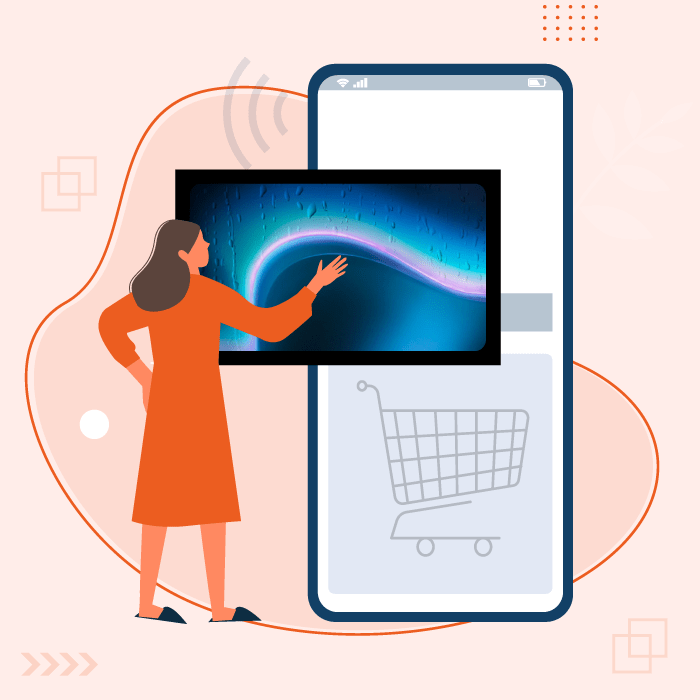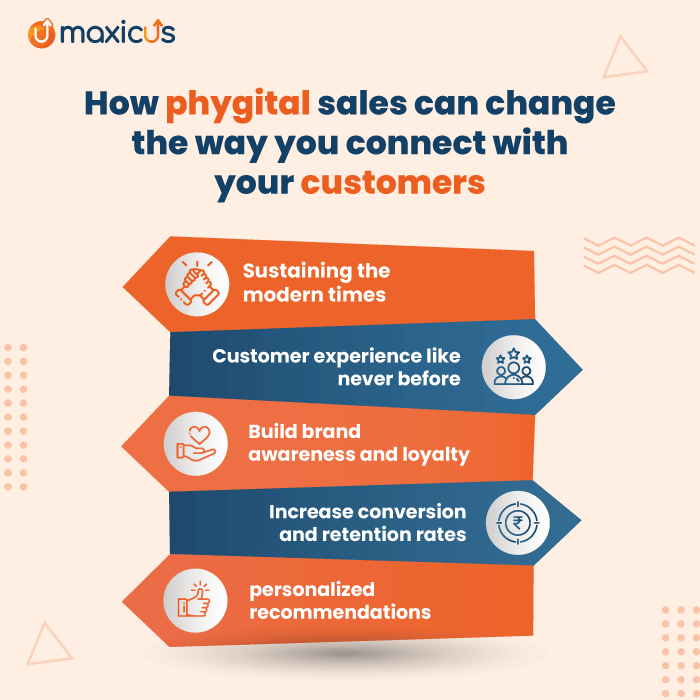Why Phygital Sales is the Key to Unlocking Higher Revenues
The way people communicate, engage, consume information, and make purchasing decisions has changed dramatically over the last two decades, with the rise of the “online culture” playing a crucial part in accelerating this trend.
Consumers now have many alternatives to easily interact online while addressing their safety concerns, whereas physical shops have traditionally been the hallmark of a tailored in-person experience. While internet shopping continued to dominate the retail landscape, customers’ attention was still drawn to the in-store experience, making both online and offline trips distinct and equally significant. This has produced an urgent necessity for market players to enter a hybrid system, known as phygital, by combining physical experience with digital convenience.
By blurring the barriers between the online and physical worlds, the phygital services offer consumers a seamless experience. In a nutshell, the transition from physical to digital, and now to the phygital environment, is where retail’s future resides.
In this post, we’ll look at phygital sales, some instances of merchants who have mastered this multi-channel sale, and why embracing the new normal with phygital is critical to unlocking higher revenues.
What is Phygital?
The terminology phygital combines the words “physical” and “digital.” This method, also known as phygital retail, merges physical shopping interaction points with digital technology to improve customer experience while increasing sales and ROI. Phygital can enable companies to present their items in real-time by leveraging an omnichannel interface.
The phygital retail approach combines trustworthiness, dependability, and human connection from the physical world with data collection and analysis from the digital, resulting in a positive strategy that can alter customer experience.
Those who recognize this sooner will have the edge over those who regard it as a passing trend.
Enhance your customer experience with our Phygital services
Getting to Physical (again)
According to GWI, more than half of North American customers conduct internet research before purchasing a product. Plus, over half the consumers still prefer to buy in person if given the option, according to the state of consumer behavior study for 2021. What exactly does that imply?

While the pandemic has hastened the trend of virtual shopping, many customers still prefer the face-to-face engagement that brick-and-mortar stores provide. As a result, phygital services will play a critical role in driving local business growth in the coming years, as it will not only assist in attracting and retaining new and existing customers but also in reducing the gap between organized and unorganized markets, providing a level playing field to businesses of all sizes.
AI and other new-age technologies will take over and improve operations in various ways, including analyzing consumer data to anticipate efficiency, shopping habits and patterns, footfalls, brand positioning, customer feedback, product, marketing, price, and the shopping experience.
Successful Phygital Examples
Amazon Go
While Amazon began as an eCommerce-only shop, the demand for a better customer experience drove the company to expand into physical locations.
Amazon devised a cashier-less retail approach that relies on AI, deep learning, and sensor fusion to operate. When a consumer scans their QR code at the store entrance, whatever item they choose is automatically placed in their virtual basket, and the amount is debited from their account.
Rebecca Minkoff
Who says fashion and technology don’t go well together? Rebecca Minkoff is another example of a phygital experience done well. Customers use touch displays at the store to “order” the things they want to test. They can see which fitting rooms are available and when they’ll be able to try on the items. Consumers use the clever touchscreen mirror to request a different size while trying on, and those items are delivered in a matter of seconds. Another significant benefit? The mirror can assist customers in adjusting the lighting in the room to see how the clothing would look.
Why is Adopting Phygital Sales Necessary?
In a phygital sales environment, the internet and physical channels are good complementaries rather than replacements.

Let’s look at some of the most compelling arguments for moving to phygital sales:
1. Sustaining the modern times
For years, merchants have been losing the fight against the internet’s ease and wealth of information. As a result, phygital is critical to the high street’s long-term viability. Businesses may boost sales and profit margins by using technology to assist merchants in anticipating client experiences and delivering customized encounters.
2. Customer experience like never before
According to reports, firms that provide exceptional customer service generate six times more income than competitors that fall short.
Consider this: why would you forget about a meal from last week yet recall every detail of your vacation from the previous year? This is because the latter engages you more emotionally and functionally. It’s the same with phygital sale, which includes social and emotional aspects in addition to logical and transactional ones. Phygital companies blend the seamless possibilities of eCommerce with the intensely emotive qualities of a traditional shopping experience.
Additionally, integrating the in-store and virtual shopping experiences streamlines the buyer’s journey, making it easier for customers to communicate with your company across many channels and at any time.
Brands are boosting client contact points inventively to make their brands more immersive. You may improve the customer experience and keep them coming back by introducing real-time product experiences using AR, gamification of UI/UX of online sites and applications, interactive in-store navigation activities, and loyalty programs.
3. Build brand awareness and loyalty
Having customers visit your retail location allows them to interact with you and your items before making a purchase. This will help increase brand recognition and confidence in your company.
Brand loyalty will naturally increase as brand awareness, customer experience, and tailored marketing techniques improve. According to studies, loyal consumers are five times more likely to make another purchase and four times more likely to recommend the company to a friend.
4. Increase conversion and retention rates
A consistent experience throughout channels fosters trust, which leads to higher conversions. As a result, multichannel brands have greater conversion rates than single-channel competitors.
A phygital strategy also increases client retention. According to research, companies with a phygital strategy have 91 percent greater year-on-year (YoY) customer retention than brands without a phygital plan.
5. Offer personalized recommendations and increase sales
How do you keep a consumer coming back again and again? Personalization is the key to increasing conversions. Phygital is more than just combining online and physical buying channels; it gives customers a smooth purchasing experience. It retargets clients so that they return on an organic basis.
According to McKinsey, personalization increases revenue by up to 15% and improves marketing-spend efficiency by up to 30%.
With phygital retail, you can access a customer’s digital footprint. This data allows for greater audience segmentation, allowing you to provide customized notifications and other material based on a person’s demographics and psychographics. This improved customisation gives the buyer a more human touch and allows marketers to tell their brand narrative successfully.
6. Prevent stockouts
One of the advantages of using the same platform to handle your online and physical businesses is that you get uniform inventory levels and precise reporting, which helps you avoid stockouts.
Final Thoughts
Retailers have been driven to adapt or die, from the global recession to the emergence of virtual shopping stores and the COVID-19 pandemic. The overarching idea is to be more innovative across channels and to engage all of the customer’s senses. Retailers must focus on the three I’s – immersion, immediacy, and interactivity – to make the phygital consumer experience a reality.
At Maxicus, we’ve created the ideal platform for enhancing the consumer experience and propelling your business into the future of retail. Get in touch with us today to explore how phygital may help your company improve its customer experience.










